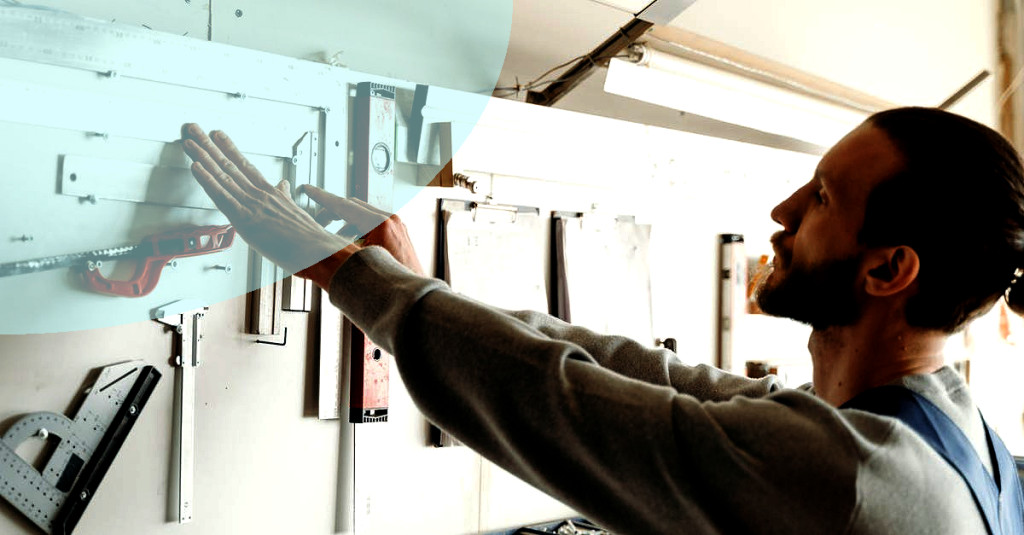Beginner's Guide to DIY Carpentry: Tips and Tools

Table of Contents
Embrace your inner craftsman! If you've ever wanted to create something beautiful and functional with your own hands, now's the time to get started. In this beginner's guide to DIY carpentry, we'll walk you through some essential tips and basic tools that will help you dive into the art of woodworking with confidence.
Finding Inspiration
- Finding Inspiration
- Safety First
- Understanding Wood Types and Grain
- Essential Carpentry Tools
- Basic Carpentry Techniques
- Starting Your First Project
- The Finished Piece: Unleash Your Creativity
Safety First
-----~-
Before you dive into the world of DIY carpentry, it's essential to find inspiration. Search through various platforms like Pinterest or woodworking blogs for project ideas that resonate with your style and preferences. With a bit of exploration, you'll find a woodworking project that sparks your creativity and kickstarts your DIY journey.
Understanding Wood Types and Grain
-----~-
Safety should always be a top priority when engaging in woodworking. To ensure a safe and enjoyable experience, follow these crucial steps:
- Wear protective gear: Always wear safety glasses to protect your eyes from sawdust and debris. It's also a good idea to wear earplugs when using power tools, especially for extended periods.
- Keep your workspace clean: A cluttered workspace is a breeding ground for accidents. Regularly clean up sawdust, remove offcuts, and keep tools organized.
- Learn how to use your tools correctly: Familiarize yourself with the instructions and safety features of your tools before diving into your first project. YouTube tutorials can be a great resource for learning the ins and outs of the tools you'll be using.
Essential Carpentry Tools
-----------------
The key to successful woodworking lies in your understanding of wood types and grain. Each type of wood has its own unique characteristics, affecting the final look and strength of your piece.
Some popular woods often used by DIY carpenters:
- Pine: Softwood, easy to work with, perfect for beginners. Comes in many varieties.
- Oak: Hardwood, easy to work with, durable, and can enhance the beauty of your projects.
- Birch: Widely used in DIY projects, strong and durable with a subtle grain appearance.
- Walnut: Hardwood with rich, dark hues that create an elegant, timeless aesthetic in your finished projects.
Always choose the appropriate wood type for the project you're working on, ensuring durability and beauty in the final piece.
Basic Carpentry Techniques
-------------~-
To achieve the finest results when taking up carpentry, invest in a set of essential tools. Here's our top picks for beginners:
- Measuring tape: Accurate measurements are crucial for successful woodworking projects. Get a reliable measuring tape to ensure precision.
- Hammer: A must-have. Choose one with a comfortable grip and a balance between weight and control.
- Saw: A handsaw or a circular saw for cutting wood to the desired size.
- Chisels: For shaping, cutting, or carving wood. Start with a basic set, including a few different sizes and blade shapes.
- Screwdriver set: For securing and fastening pieces together.
- Clamps: To hold wood in place while you work.
- Carpenter's Pencils: Perfect for marking measurements and drawing straight lines on wood surfaces.
This list should give you a solid foundation to start, but as you grow more comfortable with woodworking, you'll likely accumulate additional tools to suit your specific needs and preferences.
Starting Your First Project
-----------------
Mastering a few basic woodworking techniques will be a game-changer when it comes to DIY carpentry. Here are some essential skills to learn:
- Measuring and marking wood accurately: Learn how to measure, mark, and draw straight lines confidently.
- Cutting wood: Hone your ability to cut wood with a handsaw or a power saw, ensuring clean and precise cuts.
- Joining wood: Understand various wood joining techniques such as dowels, screws, and basic wood joints like the mortise and tenon, the dado joint, and the butt joint.
The Finished Piece: Unleash Your Creativity
---------------~
Now that you're equipped with the essentials, it's time to take on your first woodworking project. Start small with a basic project like a birdhouse, picture frame, or small shelf. Remember, practice makes perfect. Keep challenging yourself, and with each new project, you'll grow more skilled and confident in your abilities.
----------------------
When you've successfully completed your first project, don't be afraid to get creative. Customize your pieces with wood stains, paint, or varnishes to showcase your unique style. Or, try new woodworking techniques to achieve truly one-of-a-kind results.
Now that you've got your DIY carpentry fundamentals, go forth and create! Keep honing your skills, continue learning, and watch as your passion for woodworking becomes a fulfilling and lifelong hobby.





